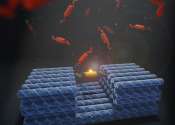Fluorescent molecules revealed by quantum chemistry and machine learning
RIKEN chemists have demonstrated a powerful way of designing molecules to satisfy predefined specifications by using it to create six fluorescent compounds. This method, which combines machine learning and quantum chemistry, ...









